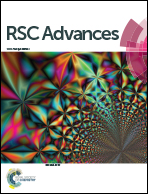Development and evaluation of an automated multi-channel multiplug filtration cleanup device for pesticide residue analysis on mulberry leaves and processed tea†
Abstract
An automated multi-channel multiplug filtration cleanup (m-PFC) device was designed and developed. m-PFC columns were suitably installed in the device. The cycle times, speed and nitrogen pressure parameters of the m-PFC column were optimized. The device was utilized to analyze the 82 pesticide residues in fresh mulberry leaves and processed tea with GC-MS/MS detection. Method validation was performed on 82 pesticide residues in fresh mulberry leaves and processed tea at spiked levels of 0.01, 0.05 and 0.5 mg kg−1. The fortified recoveries of 82 pesticides were 72–115% and the relative standard deviations were 1–15%, except for diniconazole and clodinafop-propargyl in mulberry leaves. The automated multi-channel m-PFC device was successfully applied to detect the pesticide residues in fresh mulberry leaves and processed tea samples. With comparison to the conventional QuEChERS method, the current method using this device did not need additional vortex or centrifugation steps, and could process 48–64 samples in about one hour. The automated m-PFC method saved labor and improved the precision and was shown to be efficient and practical in pesticide residue analysis.



 Please wait while we load your content...
Please wait while we load your content...